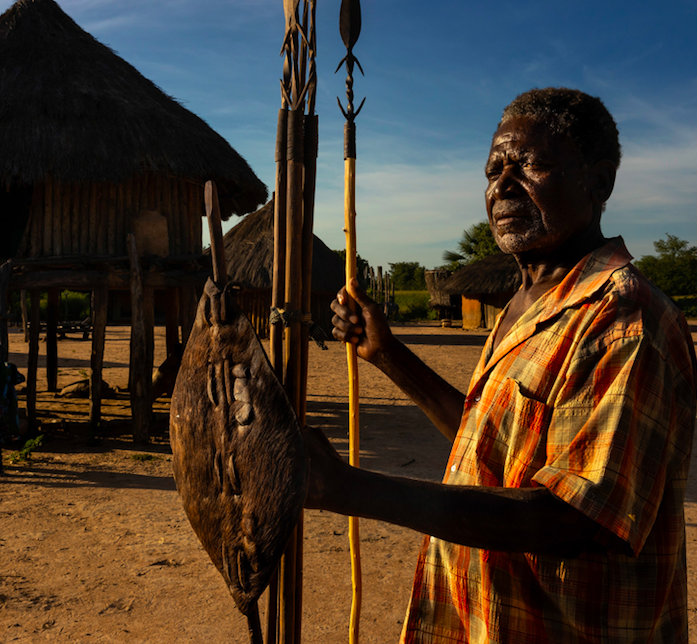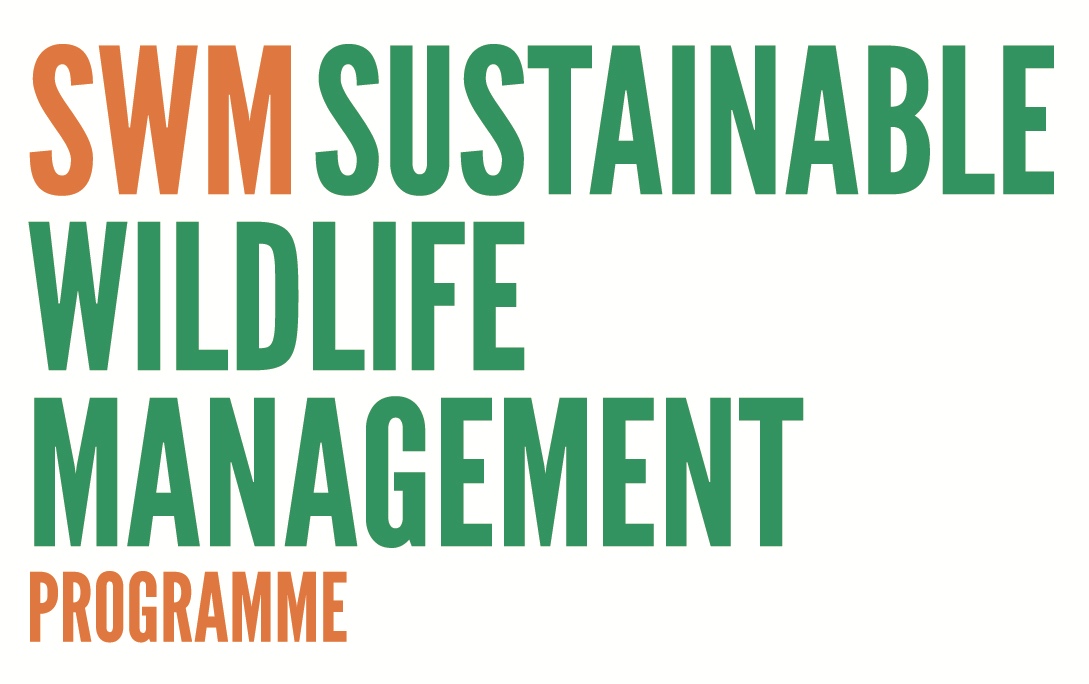Latest news
Content with SWM Country Zambia and Zimbabwe (KaZa) .

Read the latest Issue of the SWM Newsletter
16 May 2023
Read the latest Issue of the SWM Newsletter
16 May 2023
FRENCH BELOW
We are very pleased to share with you the latest issue of the SWM Programme Newsletter.
Here you will find a concise overview of recent SWM Programme activities, news, and views. This issue includes an interview with Robert Nasi, Director General, Center for International Forestry Research (CIFOR), highlights from each site and a special focus on the progress being made at the Guyana site.
We hope you enjoy this update!
***
Nous sommes très heureux de partager avec vous le dernier numéro du Bulletin du Programme de gestion durable de la faune sauvage (SWM Programme).
Vous y trouverez un aperçu concis des activités récentes du SWM Programme. Ce dixième numéro comprend une entrevue avec Robert Nasi, directeur général du Centre de recherche forestière internationale (CIFOR), les faits saillants de chaque site et un accent particulier sur les progrès réalisés sur le site en Guyana.
Nous espérons que vous apprécierez cette mise à jour!

Marco Gandolfo
Supporting community and wildlife coexistence in Southern Africa
2 March 2023
Supporting community and wildlife coexistence in Southern Africa
2 March 2023
The Kavango–Zambezi (KAZA) Transfrontier Conservation Area is one of the largest conservation areas in the world, spanning the international borders of five countries in Southern Africa.
It is home to an incredible diversity of wildlife, much of which resides outside national parks and protected areas. Poaching, habitat loss and human-wildlife conflict present many challenges.
This video presents the work of the Sustainable Wildlife Management (SWM) Programme in supporting Community Conservancies to improve community livelihoods and the sustainable management of wildlife in Botswana, Namibia, Zambia and Zimbabwe.
Watch the video here.

Towards sustainable wildlife management in Zambia and Zimbabwe
13 June 2022
Towards sustainable wildlife management in Zambia and Zimbabwe
13 June 2022
The latest SWM Programme consolidated report is a summary of the studies carried out in Zambia and Zimbabwe.
Zambia and Zimbabwe, with Angola, Botswana and Namibia, constitute the Kavango Zambezi Transfrontier Conservation Area (KaZa-TFCA), which is the largest transfrontier conservation area in the world (520 000 km²), and whose key objective is to join fragmented wildlife habitats to form an interconnected mosaic of protected areas and transboundary wildlife corridors. In this region, wildlife populations have declined over the past three decades, mainly due to poaching and loss of habitat.
In this TFCA, the Sustainable Wildlife Management (SWM) Programme aims to address these challenges by promoting the model of community conservancy (CC) to diversify income-generating activities and supply a well-balanced source of wild and domestic protein. In Zimbabwe, the SWM Programme supports the emerging project of Mucheni CC encompassing three wards of Binga District, in Matabeleland North Province. In Zambia, the target implementation sites are the Simalaha and Inyasemu CC, located in Southern Zambia.
Towards sustainable wildlife management An in-depth study for the promotion of community conservancies in Zambia and Zimbabwe: https://bit.ly/3NZaWuj?mtm_campaign=KaZaCBR&mtm_kwd=KaZaCBR
SWM KaZa webpage: https://swm-programme.info/web/guest/zimbabwe-and-zambia

Find out more about the Mucheni community conservancy in Zimbabwe (French below)
4 October 2021
Find out more about the Mucheni community conservancy in Zimbabwe (French below)
4 October 2021
Do you know what a community conservancy is?
On the SWM Programme site in Zimababwe, the Mucheni community conservancy objective is to support socio-economic development of the communities through sustainable utilisation of natural resources and agricultural development. It is set to empower the local community to play a more central role in the management and decision-making of various conservation-based enterprises.
The SWM Programme is working with traditional chiefs, local communities and government authorities to establish a Mucheni Community.
Read the Mucheni community conservancy profile to find out more: http://www.fao.org/3/cb6257en/cb6257en.pdf
***
Connaissez-vous les aires de conservation communautaires?
Sur le site du SWM Programme au Zimbabwe, l'objectif de l’aire de conservation communautaire de Mucheni est de soutenir le développement socio-économique des communautés par l'utilisation durable des ressources naturelles et le développement agricole. Il s'agit de donner à la communauté locale les moyens de jouer un rôle plus central dans la gestion et la prise de décision de diverses entreprises basées sur la conservation.
Le SWM Programme collabore avec les chefs traditionnels, les communautés locales et les autorités gouvernementales pour établir cette aire de conservation communautaire.
Lisez le profil de l'aire de conservation communautaire de Mucheni pour en savoir plus (disponible en anglais): http://www.fao.org/3/cb6257en/cb6257en.pdf

Discover the new Legal Hub – Zimbabwe profile (French below)
16 August 2021
Discover the new Legal Hub – Zimbabwe profile (French below)
16 August 2021
The Legal Hub – Zimbabwe profile is now available! Legal Hub Country Profiles aim to improve the understanding of the strengths and weaknesses of the legal frameworks. Such knowledge, combined with the evidence from other SWM Programme areas of work, will help inform the review and revision of legal frameworks aligned with country priorities.
The Legal Hub – Zimbabwe profile features:
- a legal database organized by sector
- an overview of the level of domestication of ratified international instruments
- a diagnostic of the statutory law
- a list of relevant national institutions.
Find out more:
- Legal hub: https://swm-programme.info/web/guest/legal-hub
- Zimbabwe legal profile: https://swm-programme.info/web/guest/legal-hub/zimbabwe
***
Le profil juridique du Zimbabwe est maintenant disponible! Les profils juridiques des pays visent à améliorer la compréhension des forces et des faiblesses des cadres juridiques. Ces connaissances, combinées avec les observations provenant d'autres domaines de travail du SWM Programme, offriront des éclaircissements utiles pour l'examen et la révision des cadres juridiques en conformité avec les priorités de chaque pays.
Le profil juridique du Zimbabwe présente:
- une base de données juridiques classée par secteur;
- une présentation de la transposition des instruments internationaux et régionaux;
- un diagnostic du droit statutaire;
- une liste des institutions nationales pertinentes.
En savoir plus:
- Profil juridique du Zimbabwe (en anglais): https://swm-programme.info/fr/web/guest/legal-hub/zimbabwe
- Plateforme juridique: https://swm-programme.info/fr/web/guest/legal-hub
